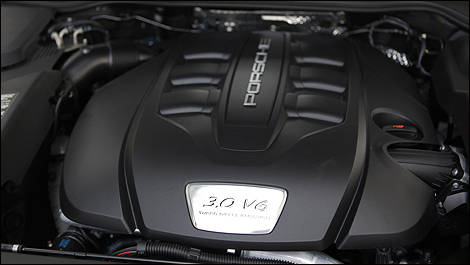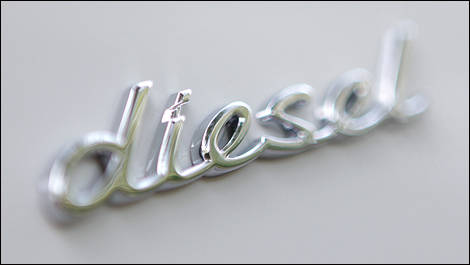A diesel engine is an internal combustion engine that uses the heat of compression to initiate ignition and burn the air-diesel mixture injected into the combustion chamber. The compression ratio must be significantly higher (than a gasoline engine) in order to ignite diesel and generate power. The lack of spark plugs and associated hardware simplifies maintenance.
Let's take a closer look...
Diesel has an octane rating that ranges from 15-25. Actually, the more accurate term is “cetane number” (CN). The higher the CN, the more easily the fuel will ignite. If the CN happens to be too low, the diesel engine might not operate properly or even start in the first place.
On older diesel vehicles, when turning the key in the ignition, you had to wait for glowplugs (heat is needed to create the optimal ignition temperature in the combustion chamber) to warm up which could take up to 15 seconds depending on exterior temperatures. Once the spring-shaped icon disappeared from the instrument cluster the engine had reached ignition temperature. You could then turn the car on.
Modern diesel vehicles are far more sophisticated and require mere seconds (often less than 2) to reach start-up temperature. Most current diesel engines don’t require drivers to wait for the icon to disappear before turning the car on.
Benefits of a diesel engine
Forced induction and direct injection
Diesel engines benefit from the same technological advancements as gasoline engines -- including turbochargers and direct injection technology -- to improve efficiency and save fuel.
Diesel drawbacks
Diesel engines have long had a bad reputation because of their obnoxious smell, pronounced vibration, annoying clatter, and dirty emissions (i.e., the presence of sulphur created toxic particles or even soot in the form of thick, black exhaust smoke). However, with today's more stringent emissions standards, most of the aforementioned drawbacks have been eliminated.
Clean diesel
The process started in 2006 with the introduction of Ultra Low Sulphur Diesel, which contains just 15 ppm of sulphur instead of 500 -- an incredible 97% reduction. The cleaner, higher-quality fuel offers tremendous environmental gains.
Automakers have even gone a step farther. AdBlue, for example, is a system that mixes an aqueous urea solution with the exhaust gases in order to reduce nitrogen oxide (NOx) emissions. It works automatically, and you can fill up the tank once every oil change. This green technology can now be found in a number of vehicles, especially from Germany.
Finally, a particulate filter is often installed behind the catalytic converter to further prevent toxic matter from being released into the environment.
 |
| Photo: Philippe Champoux |
Let's take a closer look...
Diesel has an octane rating that ranges from 15-25. Actually, the more accurate term is “cetane number” (CN). The higher the CN, the more easily the fuel will ignite. If the CN happens to be too low, the diesel engine might not operate properly or even start in the first place.
On older diesel vehicles, when turning the key in the ignition, you had to wait for glowplugs (heat is needed to create the optimal ignition temperature in the combustion chamber) to warm up which could take up to 15 seconds depending on exterior temperatures. Once the spring-shaped icon disappeared from the instrument cluster the engine had reached ignition temperature. You could then turn the car on.
Modern diesel vehicles are far more sophisticated and require mere seconds (often less than 2) to reach start-up temperature. Most current diesel engines don’t require drivers to wait for the icon to disappear before turning the car on.
Benefits of a diesel engine
- Generous torque at ultra-low revs;
- Lower revs alleviate load on the engine;
- Improved lubrication and more durable components dramatically increase diesel engine longevity;
- Optimized combustion means better mileage with the same amount of fuel as gasoline;
- Reduced fuel consumption and engine maintenance make for lower operating costs.
Forced induction and direct injection
Diesel engines benefit from the same technological advancements as gasoline engines -- including turbochargers and direct injection technology -- to improve efficiency and save fuel.
Diesel drawbacks
Diesel engines have long had a bad reputation because of their obnoxious smell, pronounced vibration, annoying clatter, and dirty emissions (i.e., the presence of sulphur created toxic particles or even soot in the form of thick, black exhaust smoke). However, with today's more stringent emissions standards, most of the aforementioned drawbacks have been eliminated.
Clean diesel
The process started in 2006 with the introduction of Ultra Low Sulphur Diesel, which contains just 15 ppm of sulphur instead of 500 -- an incredible 97% reduction. The cleaner, higher-quality fuel offers tremendous environmental gains.
Automakers have even gone a step farther. AdBlue, for example, is a system that mixes an aqueous urea solution with the exhaust gases in order to reduce nitrogen oxide (NOx) emissions. It works automatically, and you can fill up the tank once every oil change. This green technology can now be found in a number of vehicles, especially from Germany.
Finally, a particulate filter is often installed behind the catalytic converter to further prevent toxic matter from being released into the environment.
 |
| Photo: Philippe Champoux |


